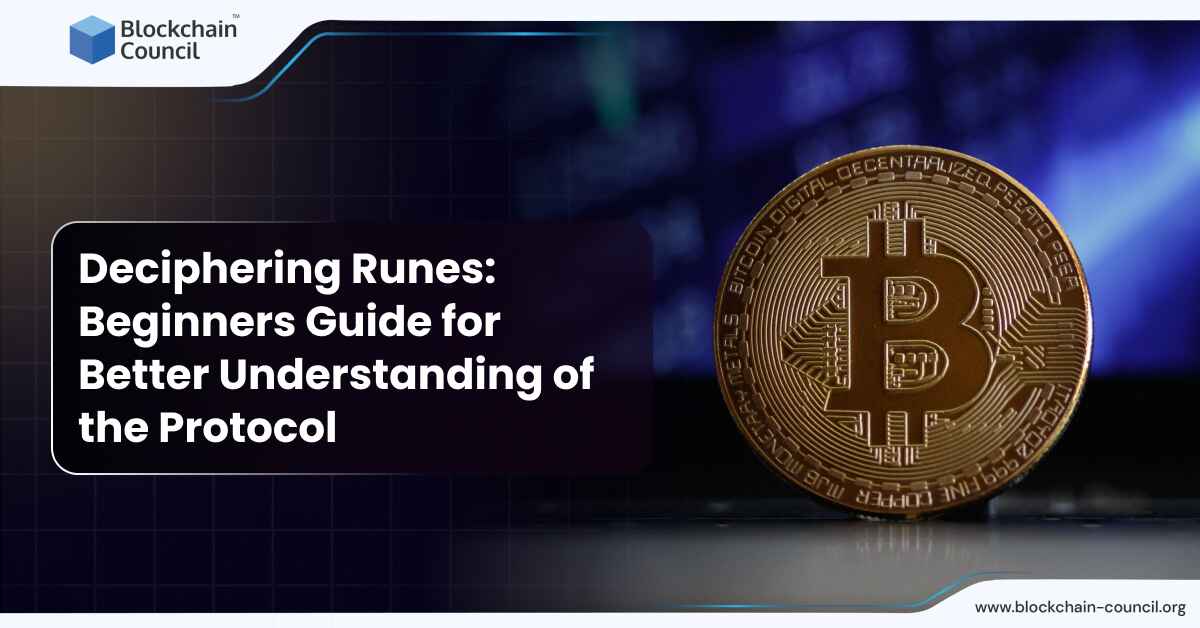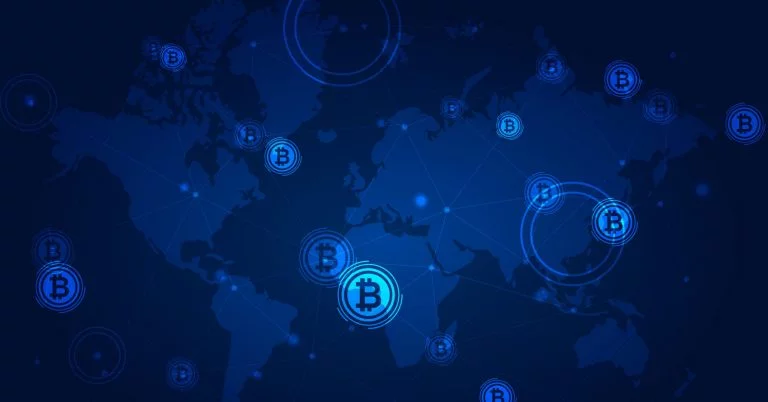
- Blockchain Council
- September 02, 2024
April is an interesting month for crypto. Many events are marking this month, starting from the famous “halving”, accompanied by a couple of new innovative updates. One of these updates is the long-expected innovation that is called the Runes protocol. Basically, it is a token standard responsible for seeking an easier and more efficient way for users to create fungible tokens on the blockchain. It was developed by Casey Rodarmor and was proposed back in September 2023 as an improved token standard on Bitcoin. Tons of development has been invested into this project since then and finally on the 20th of April was launched.
Why is the Runes Protocol Needed?
This is the first question that needs to be answered – so we better understand this protocol. Runes protocol is pretty straightforward – it is sorted out as a streamlined protocol with minimal presence in the blockchain and efficient UTXO management. UTXO’s or Unspent Transaction Outputs goal is to address specific needs within the blockchain, representing units of Bitcoin value, which are not yet spended and can be used as inputs in fresh transactions. In contrast to BRC-20, Runes operates fully on UTXO and Is less complicated – and it’s expected that BRC-20 will be successfully replaced by Runes. Beyond the function of replacement, another goal is to surpass other fungible token protocols on Bitcoin such as RGB and Taproot Assets which rely on off-chain data for operation. Many of these issues such as Taproot Assets storing the metadata off-chain, leading to a disconnection between asset information and Bitcoin’s main layer, or like Omni Layer and Counter party’s necessity of a native token for functionality will be overcomed.
Understanding the Protocol’s Mechanics
As a starting point, as we mentioned before Runes integrates with the Bitcoin UTXO based model which leads to less unnecessary produced UTXO junk into the system. So this specific amount of BTC that has not been spent yet, is available for a new payment, which really is an output of a prior Bitcoin transaction, and can be used as an input for the following transaction.
Assigning a Rune to a UTXO involves a protocol message specifying the output, ID, and amount via OP_RETURN, a unique function for data storage on Bitcoin. OP_RETURN outputs, being unspendable, don’t contribute to UTXO congestion.
The ID serves as a numeric Rune identifier, while the output identifies the output index for the Rune token reception, and the amount indicates the quantity of Rune tokens transferred. All Rune messages, whether creating new runes or transferring them, are encoded within a single OP_RETURN output in a transaction, housing divisibility, rune name, and metadata.
A Rune’s token supply carries within a solitary UTXO, represented by a 128-bit unsigned integer, with maximum divisibility ending at 38. Another activity run by UTXO is following the balances, which are not directly transferred to wallet addresses, housing them within UTXOs instead.
Runestones Explained – Role and Impact
Etching, minting, transferring, and the concept of cenotaphs constitute the fundamental operations within the Runes processes, and all of these processes are conducted through runestones. These runestones serve as protocol messages, kept within Bitcoin transaction outputs. Notably, upon the activation of the Runes protocol at Bitcoin block 840,000, all runestones predating this step will no longer be used.
In essence, a runestone encompasses various fields dictating the properties of a Rune token during its creation or etching phase. These properties include the name, divisibility, symbol, premium allocation, terms of open minting, token cap, minting amount, and start and end heights for minting initiation, among others. After the rune is created, the following step involves minting.
Minting involves the allocation of tokens, with etchers obliged to specify the Rune ID within the mint field, containing the transaction index and block height where the token was etched. Open minting, similar to the BRC-20 token standard, is governed by terms established during the etching phase.
Following minting, the next logical progression is the transfer of Rune tokens through edicts, instructions defining the movement of tokens from input to output within a transaction. Encoded within OP_RETURN, edicts present the output number, Rune ID, and amount, enabling various functionalities such as batch transfers and airdrops.
Instances of erroneous runestones are termed cenotaphs, often produced by making inaccuracies or missed outputs. The Runes protocol implements token burning in transactions featuring cenotaphs, in a way forcing users towards proper UTXO management, in contrast to its forebear the BRC-20 token standard.
Empowering Bitcoin – Advantages of the Runes Protocol
Looking ahead, the Runes protocol promises plenty of benefits for the Bitcoin community. Firstly opens the door for diverse fungible token issuance encompassing security tokens, stablecoins, and governance tokens directly on the Bitcoin blockchain. This is the perfect way to optimize Bitcoin’s utility with increasing the potential of attracting a wider user base, promising transactions executed with lower costs within an almost instant time. By utilizing the Lighting Network, a separate layer on top of Bitcoin gains the ability to conduct transactions cost-effectively helping participants on how to buy cryptocurrency in 2024 with less cost and in less time.
Furthermore, the increased transaction activity is poised to generate higher revenue through transaction fees, providing vital support to Bitcoin miners, particularly as the block reward dwindles post-April 2024. Moreover, this protocol serves as an inspiration to high-achieving developers to create the next bigger innovation in the crypto world by using the most secure public blockchain.
The idea behind this protocol is to enable the delivery of NFTs without intermediaries directly to Bitcoin, minimizing negative effects essential in existing protocols while enhancing efficiency and security. With meticulous design considerations and a commitment to overcoming the shortcomings of predecessors like the BRC-20 token standard, Runes rises as the new star of the show.




































































 Guides
Guides News
News Blockchain
Blockchain Cryptocurrency
& Digital Assets
Cryptocurrency
& Digital Assets Web3
Web3 Metaverse & NFTs
Metaverse & NFTs
